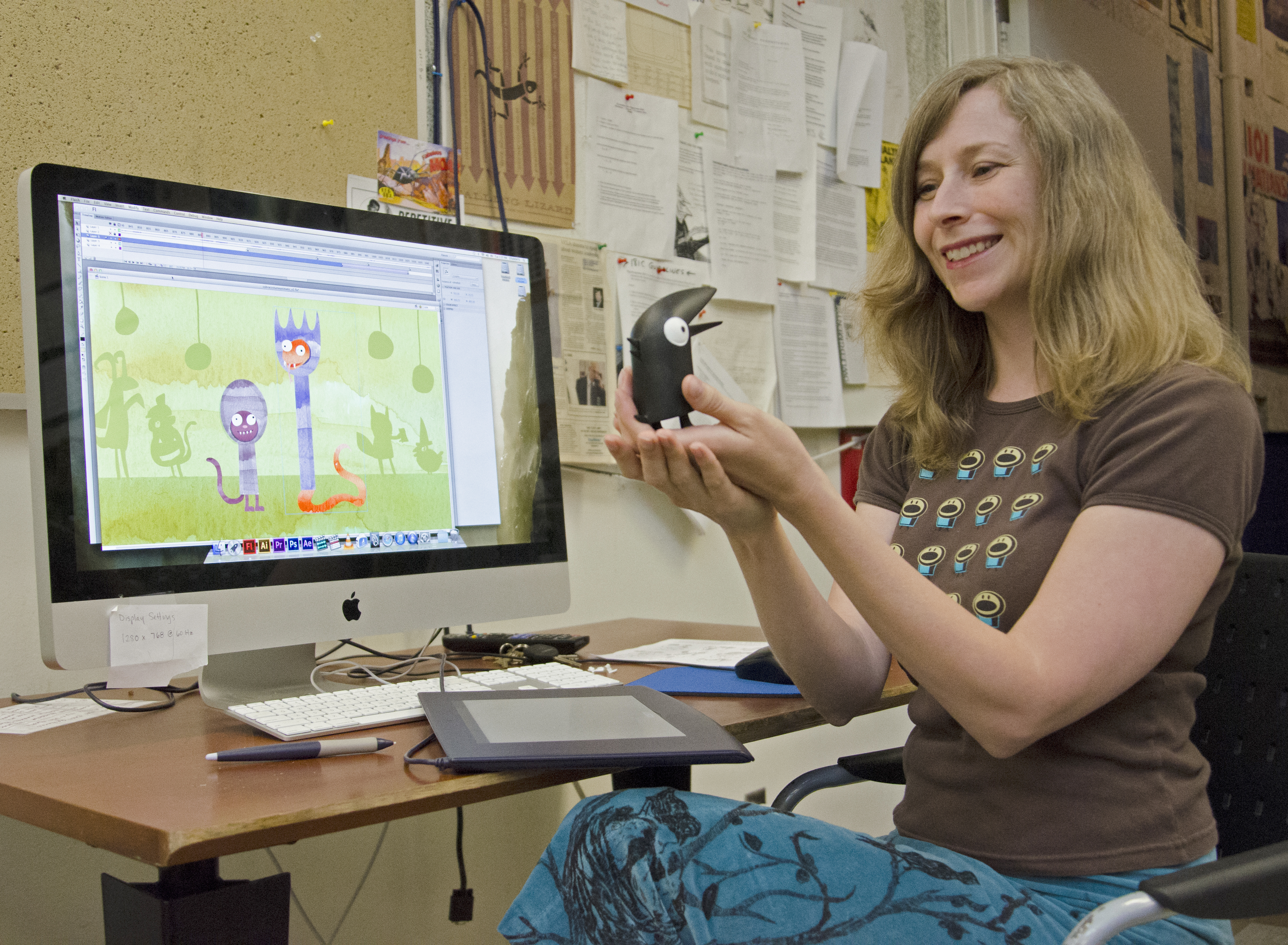Instructor recalls path from student to animator

By Erin Donnelly
Oct. 10, 2013 1:35 a.m.
A tiny alien getting eaten by a killer whale was supposed to be Amy Winfrey’s first and last venture into the world of live animation.
The 15-second clip took an entire quarter to make, and the tedious process almost turned the now successful animator and UCLA instructor away from the world of animation entirely.
“I thought ‘I’m never doing that again.’ It was too much work,” Winfrey said, sitting in the paint- and poster- filled animation room in Melnitz Hall.
But watching an audience laugh at her creation at a final showing changed her mindset and launched her career into the world of professional animation.
“There is a lot of satisfaction to be had about people enjoying your films, that’s the fun part,” she said.
Today, 15 years after enrolling in her first animation class, Winfrey has her animation credit on several successful shows, including “South Park” and a Nickelodeon show she created called “Making Fiends.”
Winfrey started telling stories when she was a child but never thought about animation until taking a class at UCLA on a whim.
As an English student, she was used to molding stories with words and poetry. She morphed her passion for stories with her hobby for doodles to create her animations.
While she was a student in the 1990s, she answered an advertisement from the UCLA School of Theater, Film, and Television for animators and got her first official gig working for “South Park” in an empty sperm bank facility in Westwood.
“They are very fast paced over there,” she said, laughing. “Other animated shows took months but we had weeks.”
After taking a year off school to help animate the feature film, “South Park: Bigger, Longer & Uncut” she graduated from the School of Theater, Film and Television.
The “South Park” series was one of the few animated television shows that is still produced entirely in America, she said.
Currently, animation projects are being outsourced overseas to places like India and South Korea where labor is cheaper, said Doug Ward, a UCLA lecturer.
American producers will develop the plot and the characters and send it overseas for someone else to draw, he said.
To adapt to the shift, UCLA students and alumni, including Winfrey have to take a different approach to pursuing an animation career.
Instead, students tend to focus on the jobs that are still available at American networks. This summer Winfrey returned to UCLA to teach a class on storyboarding, which is the process of laying out the plot of a animated film through pictures.
But what seems to be an increasingly more popular method of making it in the animation industry is the one that Winfrey pursued herself – get started as an independent animator through an online presence.
“I could never predict when I was young that I was going to grow up and make web cartoons because the Internet did not exist,” she said. “But now things are different.”
Winfrey’s web series, “Making Fiends”, a dark comedy animated series about two girls, one evil and one good, started to grow a steady online audience.
Soon, the web series got picked up by Nickelodeon and ran for about a year.
Winfrey went from doing everything on her own, from the character’s shrill voices to drawing out the curls in the protagonist’s hair to having a full production crew.
Like most other animated shows, “Making Fiends” started to outsource the show’s animation to Asia.
“The language barrier was sometimes a problem,” she said. “We would get something back and be, ‘Why is this (colored) so dark?'”
One of Winfrey’s teaching assistants this summer said she was not deterred by the outsourcing of animation.
“In the old days you needed to really rely on the studios but now days we have the Internet,” said George Feral, a graduate student at the UCLA School of Theater, Film and Television. “That is one of my plans – (to) really take advantage of the Internet – it is a good way to get started.”
Winfrey has another animated show in the works but in the meantime she is back at UCLA this fall to teach animation and help other aspiring animators make the 15-minute clips that might launch their career.
“The best part is the final product, seeing that you have made something with purpose,” she said. “That makes all the work worth it.”

